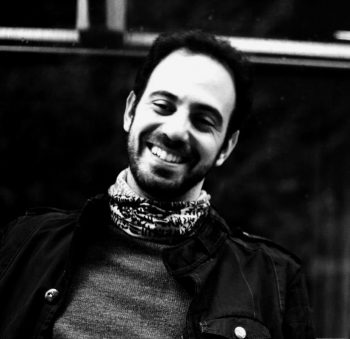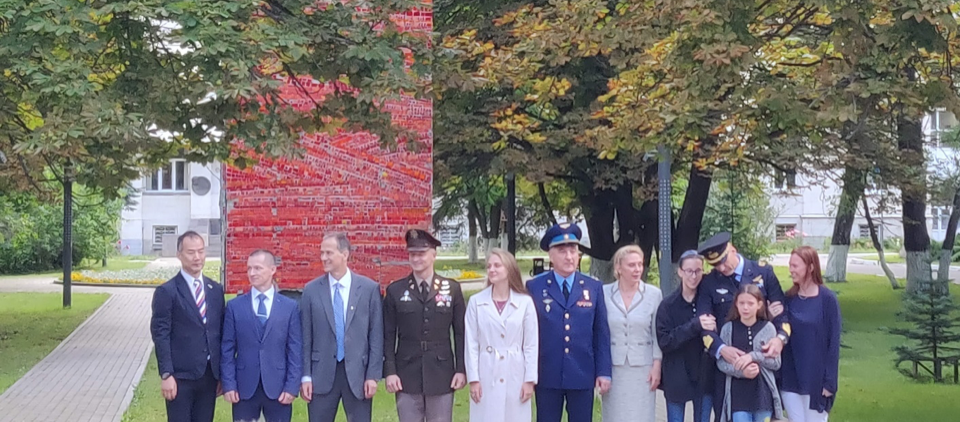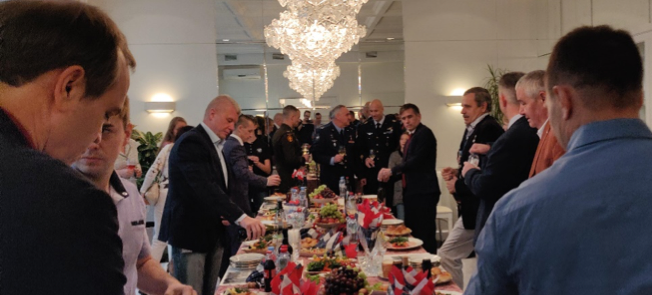
ESA flight surgeon Adrianos Golemis
Dr Adrianos Golemis is an ESA flight surgeon, monitoring the health of European astronauts before, during and after spaceflight. He is currently in Baikonur, Kazakhstan for the launch of Luca Parmitano where he is supporting Luca through a period of medical quarantine ahead of his launch to the International Space Station. The following post was written by him as a firsthand account of his experience.
Date: 02 July 2019
Location: Star City Prophylactorium
Our journey begins in Cologne, Germany. A short sleep, then an S-Bahn ride to the train station, ICE to Frankfurt and a flight to Moscow. We are on our way to Байконур (Baikonur), currently the world’s only gateway for astronaut missions to Low Earth Orbit (LEO). In Baikonur, the International Space Station (ISS) is omnipresent: an elaborate science laboratory in eternal freefall around our planet.
Excitement and caffeine blend as my colleague Andy Orth of ESA’s crew operations team and I take our seats on the plane. There is also a bit of stress – we are first-timers travelling to support the launch operations of a European astronaut, Luca Parmitano.

Prime and backup crew traditional photo prior to leaving Star City.
I say it begins in Cologne, but this whole experience actually started a long time ago. Both Andy and I work at the European Space Agency’s Cologne-based astronaut centre, the heart of human spaceflight in Europe. But for me, being a doctor, it began with my medical degree in Greece and my Master’s in Space Studies in France: one way to start down the path to Space Medicine!
Or did it start even before? The reason many of us work in the space sector is an inner thirst for the mysteries of the cosmos and an affinity for joining aspiring missions. I can personally trace this thread back to a childhood passion for astronomy – and perhaps the same is true for many of the crew that fly to the ISS, the astronauts and cosmonauts from many nations who we are here to support.
But maybe, in the end, it all starts with the stars.
Our pondering about them and the inviting spell they have cast unto us humans since before the dawn of time.
[ngg src=”galleries” ids=”3″ display=”basic_thumbnail”]At Frankfurt airport, my baggage is slightly overweight and I can’t withhold a smirk while thinking that half the cargo is medication and the other half is candy and treats to exchange with international colleagues. We are all flying to Baikonur in Kazakhstan. That is where the launch of the Союз (Soyuz) spacecraft, which will ferry the astronauts to space, will take place. But we are going in early.
We have several days of living in isolation ahead of us, a means of disease prevention in order to make sure that no medical conditions can hinder the crew’s launch or jeopardise the upcoming spaceflight. This is also where the role of ESA’s medical and crew support teams is important. And it is why Andy and I are here.
On the flight to Moscow it is time to revise mission documents and get ready. The plane lands at Domodedovo airport and Igor drives us to another unique location: Звёздный городо́к, also known as Star City. This is the home of the GCTC (or ЦПК), the Gagarin Cosmonaut Training Centre. Nowadays, under the auspices of international collaboration, astronauts from all countries that participate in the ISS programme train here. They do the same in Europe, Japan,
Canada and the United States – an unthinkable feat just a few short decades ago, when the Space Race and Cold War were still raging.
Star City is calm and majestic, and also cult-like a way. A stroll through history. It is our second time here and, in many ways, it feels like home. Upon arrival, we are greeted by ESA and NASA colleagues and we meet Luca and his family. We live on the second floor of the Prophylactorium, a building we affectionately call “the Prophy”. The ESA Star City Office is literally next door to my room.
Most of this time is devoted to acquiring some additional supplies and preparing. We are flying out again tomorrow. Outside it’s rainy, but with Russian roubles in our hands we rush to the Магнит (Magnit) market to pick up some last-minute items.
[ngg src=”galleries” ids=”1″ display=”basic_thumbnail”]

The Магнит, last chance to get your much-needed supplies before flying to quarantine.
Our adventure starts here. This is where the three people soon to fly into space have come to train meticulously in the past, to pass their final exams and get ready for more than six months of living and working in microgravity. This is also where we will embark on a special flight to Baikonur, the age old launch site of Roscosmos, where we will abide for almost three weeks, secluded, in a sort of medical “quarantine”.
Luca seems in very good spirits and committed as always. At noon our team joins a meeting organised by our Russian colleagues concerning the rules of quarantine in Baikonur. We all have to be very cautious in case someone contracts a disease. This should be contained and exposure of the astronauts to the pathogen should be prevented. In the particular conditions of spaceflight, even a cold impacting your ability to equalise the pressure in your ears could jeopardise performance.
Yuri and Anna, the ESA colleagues at Star City, prepare a cosy soirée for Luca’s family. It is a delight to spend some time with them, to get to know them a bit. They are as much a part of this mission as any of us. Then the night is dedicated to re-packing for Baikonur. I have to fit two extra medical kits into my luggage and everything must be properly tagged.
At daybreak we carry all our bags to the ground floor (and there are plenty). According to tradition, the prime crew for this spaceflight (Luca Parmitano, Aleksandr Aleksandrovich Skvorchov and Drew Morgan), all dressed up in uniform, are seen off by officials and families during breakfast. This is also the moment for us to be introduced to Russian toasting traditions!

Seeing off the crew during breakfast.

Baggage tag in Latin and Cyrillic characters.
The backup crew is also here, comprised of NASA’s Tom Marshburn, JAXA’s Soichi Noguchi and Roscosmos’ Sergey Nikolayevich Ryzhikov. Together with Luca (ESA), Drew (NASA) and Sasha (Roscosmos), they respond to media questions and step in for a photograph before heading to the bus that takes us all to the nearby airport.
Some of the astronauts are moved as they say goodbye to their families. They will get very few other chances to meet with them before they fly into space. And even then, it will be under controlled conditions.
But the crew are not the only ones whose emotions are affected. For many of us on this morning, the air is filled with the feeling of being part of a mission. A sense of purpose.
чкаловский (Chkalovskiy) is an unusual airport, located next to Star City. It is from here that the first human to fly in space, Yuri Alekseyevich Gagarin, set off on his last MIG plane flight and unfortunate follow-up accident. In our case, a whole team of Russians, Americans, Japanese and Europeans is set to fly to Kazakhstan on a Tupolev aircraft whose interior adds to the extraordinary experience.
Our end destination is Krayniy Airport (Аэропорт Крайний) near Baikonur. The quarantine awaits us.
But as we leave Star City behind, I can’t help but remember:
It all starts with stars… ҉



Discussion: no comments